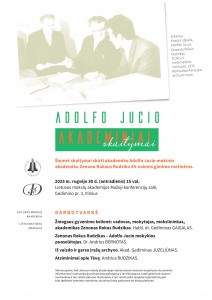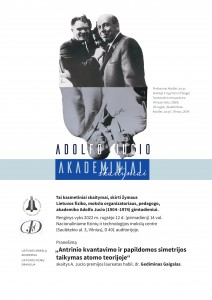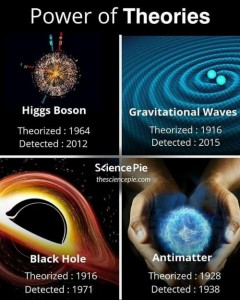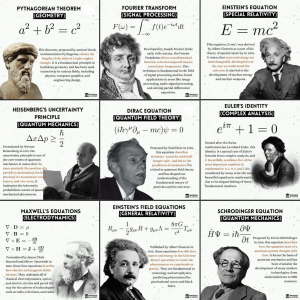Research
2018 – present

Fields of research
Multi-electron atomic theory, spectroscopy.
Modelling of contemporary atomic theory problems based on usual and symbolic programming.
Research Projects (2026)
Correlation and relativistic effects in multivalency atoms and ions (project supported by University budget). Supervisor: Prof. Dr. G. Gaigalas, research group: Dr. P. Rynkun, Dr. L. Kitovienė. 2025–2029.
Research Projects (2025)
Correlation and relativistic effects in multivalency atoms and ions (project supported by University budget). Supervisor: Prof. Dr. G. Gaigalas, research group: Dr. P. Rynkun, Dr. L. Kitovienė. 2025–2029.
Lithuanian-Japanese project An Investigation of Kilonova Ejecta in Neutron Star Merger (funded by Research Council of Lithuania (S-LJB-23-1)). Supervisor: Prof. Dr. G. Gaigalas, research group: Dr. P. Rynkun, Dr. L. Kitovienė. 2023 April 1 to 2025 March 31.
Suitable statistical representations for quasi-continuous spectra of singly ionized lanthanides (𝑍=59–70) were examined based on our previous ab-initio calculations using the multi-configuration Dirac-Hartree-Fock and parametric potential methods. Using higher-order Gram-Charlier expansions, an improved representation was obtained for the statistical distribution of the level energies. Systematic features, such as the mean, variance, and skewness of the distribution, are explained in terms of atomic structure theories. We found that the effective line strength, defined as the product of the line strength and the Boltzmann factor at a given temperature, follows a log-logistic distribution. The scaling parameter of the log-logistic distribution gives an indicator of which transitions should be included in opacity calculations for neutron star mergers (for more details, see in D. Kato, M. Tanaka, G. Gaigalas, L. Kitovienė, and P. Rynkun, Statistical analysis on level energies and effective line strengths of singly ionized lanthanides for opacity of kilonovae, Physics Letters A, 558, 130884 (2025)).
Research Projects (2024)
 Correlation and relativistic effects in multivalency atoms and ions (project supported by University budget). Supervisor: Prof. Dr. G. Gaigalas, research group: Dr. P. Rynkun, Dr. L. Kitovienė. 2020–2024.
Correlation and relativistic effects in multivalency atoms and ions (project supported by University budget). Supervisor: Prof. Dr. G. Gaigalas, research group: Dr. P. Rynkun, Dr. L. Kitovienė. 2020–2024.
The Rayleigh–Schrödinger perturbation theory in a nonrelativistic approach was extended to a relativistic approach in such a way that the Feynman diagrams corresponding to the core–valence, core, and core–core correlations are presented in an irreducible tensorial form in the jj–coupling. This allows us to use the spin–angular library rangular without any modifications and to make the easiest implementation of this theory in the GRASP2018 package in general. Two proposed computational methods (RCI+RSMBPT and RCI (RSMBPT)), which combine the RCI method and the stationary second–order Rayleigh–Schrödinger many–body perturbation theory in an irreducible tensorial form, allows us to include the core–valence, core, and core–core correlations for atoms or ions with any number of valence electrons in a simplified way instead of the large RCI computations (for more details, see in G. Gaigalas, P. Rynkun, and L. Kitovienė, Second–Order Rayleigh–Schrödinger Perturbation Theory for the GRASP2018 Package: Core–Valence Correlations, Lithuanian Journal of Physics, 64, No. 1, 20-39 (2024), G. Gaigalas, P. Rynkun, and L. Kitovienė, Second–Order Rayleigh–Schrödinger Perturbation Theory for the GRASP2018 Package: Core Correlations, Lithuanian Journal of Physics, 64, No. 2, 73-81 (2024), and G. Gaigalas, P. Rynkun, and L. Kitovienė, Second–Order Rayleigh–Schrödinger Perturbation Theory for the GRASP2018 Package: Core–Core Correlations, Lithuanian Journal of Physics, 64, No. 3, 139-161 (2024)). These combinations work perfectly for calculating energy and transition parameters. The developed method has an advantage over the regular method because it allows the selection of the most relevant core–valence, core, and core–core correlations and significantly reduces the configuration state function space.
Lithuanian-Japanese project An Investigation of Kilonova Ejecta in Neutron Star Merger (funded by Research Council of Lithuania (S-LJB-23-1)). Supervisor: Prof. Dr. G. Gaigalas, research group: Dr. P. Rynkun, Dr. L. Kitovienė. 2023 April 1 to 2025 March 31.
The 63 energy levels of the Th III ion and the 455 E1–type transitions between these energy levels were calculated and analyzed. The multiconfiguration Dirac–Hartree–Fock and relativistic configuration interaction methods, which are implemented in the GRASP2018 software package, were used in the present research. The accuracy of the energy levels was assessed by comparing our results with the values recommended by the NIST ASD database and with energy levels calculated using various methods. The accuracy of the transition characteristics was determined using the quantitative and qualitative evaluation (QQE) method (see P. Rynkun, S. Banerjee, G. Gaigalas, M. Tanaka, L. Radžiūtė and D. Kato, Astronomy and Astrophysics, 658, A82 (2022), G. Gaigalas, P. Rynkun, S. Banerjee, M. Tanaka, D. Kato and L. Radžiūtė, Monthly Notices of the Royal Astronomical Society, 517, 281 (2022), and L. Radžiūtė and G. Gaigalas, Atomic Data and Nuclear data Tables, 152, 101585 (2023)). Finally, was demonstrated that kilonova spectra can show recognizable absorption features of Th III lines with a Th abundance of (3–10)×10-5.
Research Projects (2023)
Correlation and relativistic effects in multivalency atoms and ions (project supported by University budget). Supervisor: Prof. Dr. G. Gaigalas, research group: Dr. P. Rynkun, Dr. L. Kitovienė. 2020–2024.
Configuration state function generators (CSFGs) method has been developed. It was shown how a regrouping of the configuration state functions and the introduction of CSFGs allow for a substantial reduction of the computational load in relativistic CI calculations. The computational methodology based on configuration state function generators was implemented in the General Relativistic Atomic Structure package, it was applied to a number of atomic systems and correlation models with increasing sets of one-electron orbitals. It demonstrated a reduction of the CPU time with factors between 10 and 14 for the largest CI calculations. The inclusion of the Breit interaction into the calculations is time-consuming. By applying restrictions on the Breit integrals it was shown that it is possible to further reduce the CPU times with factors between 2 and 3, with negligible changes to the computed excitation energies. We also demonstrated that the introduction of configuration state function generators allows for efficient a priori condensation techniques, with reductions of the expansions sizes with factors between 1.5 and 2.5 and the CPU time with factors between 2.5 and 4.5, again with negligible changes to the excitation energies. In total, we demonstrated reductions of the CPU time with factors up to 68 for CI calculations based on configuration state function generators, restrictions on the Breit integrals and with a priori condensed expansions compared to ordinary CI calculations without restrictions on the Breit integrals and with full expansions. Further perspectives of the new methodology based on configuration state function generators were provided.
Lithuanian-Japanese project An Investigation of Kilonova Ejecta in Neutron Star Merger (funded by Research Council of Lithuania (S-LJB-23-1)). Supervisor: Prof. Dr. G. Gaigalas, research group: Dr. P. Rynkun, Dr. L. Kitovienė. 2023 April 1 to 2025 March 31.
Atomic properties calculations were done for Ge-like sequence: As II, Se III, Br IV, and Kr V. The multiconfiguration Dirac-Hartree-Fock and relativistic configuration interaction methods, which are implemented in the general-purpose relativistic atomic structure package GRASP2018, were used in the present research. We computed the energy levels of the 4s24p2, 4s4p3, 4p4, 4s24p{5s, 6s, 5p, 6p, 4d, 5d, 4f}, and 4s4p2{4d, 5s} configurations and the electric dipole, magnetic dipole, and electric quadrupole transitions between states of these configurations. The accuracy of energy levels was evaluated by comparing it with recommended values in Atomic Spectra Database of the National Institute of Standards and Technology and other methods. The accuracy of transition data was investigated using the quantitative and qualitative evaluation method (for more details, see in P. Rynkun, S. Banerjee, G. Gaigalas, M. Tanaka, L. Radžiūtė, and D. Kato, Astronomy & Astrophysics, 658, A82 (2022), G. Gaigalas, P. Rynkun, S. Banerjee, M. Tanaka, D. Kato, and L. Radžiūtė, Monthly Notices of the Royal Astronomical Society, 517, 281-293 (2022), and L. Radžiūtė, G. Gaigalas, Atomic Data and Nuclear Data Tables, 152, 101585 (2023)). We applied our results to astrophysics by constructing the list of M1-type transitions for kilonova. For Ge-like ions presented in this investigation, we confirmed that the transition list assuming the LS-coupling selection rules, as adopted in the previous studies, includes all the important transitions and that an analytic formula for transition probabilities gives a good accuracy.
Construction of atomic data and plasma modeling toward understanding the origin of heavy elements (FY2023 NIFS General Collaboration Project, Japan). NIST supervisor: Dr. D. Kato, representative: Dr. M. Tanaka, research group: N. Domoto, Dr. K. Hotokezaka, Prof. Dr. I. Murakami, Prof. Dr. G. Gaigalas, Dr. L. Kitovienė, Dr. P. Rynkun, Prof. Dr. N. Nakamura, S. Kodangil, Prof. Dr. H. Tanuma, H. Sakaue, P. Vishwakarma. 2023 April 1 to 2024 March 31.
Using the atomic data calculated with HULLAC and GRASP, the absorption coefficient in the kilonova ejecta and light curves of kilonova were calculated and the impact of the accuracy in atomic calculations was evaluated. Opacity database in the NIFS was updated. Comparing the experimental data of laser induced breakdown spectroscopy at UEC with theoretical atomic data, accurate atomic data for Ce III and La III, which are identified in the near infrared spectra of kilonova, were developed. Systematic M1 transition data covering all the elements to understand the properties of latetime emission-line spectra of kilonovae were constructed. Using these data, non-LTE calculations of emission line spectra were performed.
Research Projects (2022)
 Correlation and relativistic effects in multivalency atoms and ions (project supported by University budget). Supervisor: Prof. Dr. G. Gaigalas, research group: Dr. P. Rynkun, Dr. L. Radžiūtė. 2020–2024.
Correlation and relativistic effects in multivalency atoms and ions (project supported by University budget). Supervisor: Prof. Dr. G. Gaigalas, research group: Dr. P. Rynkun, Dr. L. Radžiūtė. 2020–2024.
Energy spectra calculations were done for 225 levels for the Ce3+ ion. The root-mean-square deviations obtained for the GRASP2018 energy levels of the 5p6nl configurations from the NIST data are 1270 cm−1. Furthermore, E1 transition data, line strengths, weighted oscillator strengths, and transition rates were computed between the above levels. Also, the accuracy of the transition parameters was evaluated by analyzing the dependencies of the line strength S on the gauge parameter G (for more details, see in P. Rynkun, S. Banerjee, G. Gaigalas, M. Tanaka, L. Radžiūtė, and D. Kato, Astronomy & Astrophysics, 658, A82 (2022) and G. Gaigalas, P. Rynkun, S. Banerjee, M. Tanaka, D. Kato, and L. Radžiūtė, Monthly Notices of the Royal Astronomical Society, 517, 281-293 (2022)). Using this data, the opacities in the neutron star merger ejecta were also calculated.
Research Council of Lithuania postdoctoral fellowship Theoretical multipole interference study for gravitational wave sources (Nr. 09.3.3-LMT-K-712-19-0080). Dr. L. Radžiūtė, supervisor Prof. Dr. G. Gaigalas, 2020 – 2022.
Accurate energy levels for Sb-like: Sb I–Cs VI were presented, using MCDHF and RCI methods. Accuracy of E1 and E2-type transition was investigated, using quantitative and qualitative evaluation methodology (for more details, see in P. Rynkun, S. Banerjee, G. Gaigalas, M. Tanaka, L. Radžiūtė, and D. Kato, Astronomy & Astrophysics, 658, A82 (2022) and G. Gaigalas, P. Rynkun, S. Banerjee, M. Tanaka, D. Kato, and L. Radžiūtė, Monthly Notices of the Royal Astronomical Society, 517, 281-293 (2022)). Special attention was paid to the Te II, because of its importance to the opacity investigation. Also, the most suitable elements for the multipole interference, according to the admixing coefficient, were found. The accuracy of expected and unexpected transitions was evaluated using new methodology.
Research Projects (2021)
Correlation and relativistic effects in multivalency atoms and ions (project supported by University budget). Supervisor: Prof. Dr. G. Gaigalas, research group: Dr. P. Rynkun, Dr. L. Radžiūtė. 2020–2024.
The multiconfiguration Dirac–Hartree–Fock (MCDHF) and relativistic configuration interaction (RCI) methods were used to compute excitation energies and transition data for the 147 lowest states of the even 3s3p4, 3s23p23d, 3p43d, 3s3p23d2 configurations and for the 124 lowest states of the odd 3s23p3, 3p5, 3s3p33d, 3s23p3d2, 3p33d2 configurations for the P-like ions: As XIX, Kr XXII, Sr XXIV, Zr XXVI, Mo XXVIII, and W LX. E1 transition rates and weighted oscillator strengths among these states are given. Valence–valence, core–valence and core–core electron correlation effects are included. Computed excitation energies and transition data are compared with the NIST recommended values and experimental or theoretical results of other authors. All calculations were performed using the general relativistic atomic structure package GRASP2018.
Research Council of Lithuania postdoctoral fellowship Theoretical multipole interference study for gravitational wave sources (Nr. 09.3.3-LMT-K-712-19-0080). Dr. L. Radžiūtė, supervisor Prof. Dr. G. Gaigalas, 2020 – 2022.
Accurate energy levels for the As-like ions: Se II, Br III, Kr IV, Rb V, Sr VI were obtained using MCDHF and RCI methods. Accuracy of E1 and E2-type transition properties was investigated using new methodology, based on gauge dependence. 77%–97% of E1 type transitions have D (the NIST transition-probability compilations include values with uncertainties ranging from 1% to larger than 50%, with an approximate uncertainty range being indicated for each line by an assigned letter) or better accuracy. 96%–98% of E2 type transitions have C or better accuracy. First four elements mainly are generated by s-process, except Sr, which is produced by r-process. This element is the first element identified in the electromagnetic spectra of two merging stars.
Precision spectral measurements of highly charged rare earth elements and their data analysis with nonempirical MCDF-CI calculation (FY2021 NIFS General Collaboration Project (LHD Experiment), Japan). Supervisors: Prof. F. Koike and Dr. I. Murakami, research group: Prof. Dr. G. Gaigalas, Dr. Ch. Suzuki, Dr. A. Sasaki, Dr. M. Goto, Dr. D. Kato, Dr. T. Kato, H. Sakaue, 2021.
The spectral measurement of La, Pr, and Eu was continued. Combining the previously measured spectral data, atomic number dependence of the EUV and XUV spectra of lanthanide elements was analyzed in detail. A GRASP2018 package was employed for the work of the spectral line identifications. The spectrum was also compared with the available EBIT experimental data and also with the available LIBS experimental data.
Research Projects (2020)
Correlation and relativistic effects in multivalency atoms and ions (project supported by University budget). Supervisor: Prof. Dr. G. Gaigalas, research group: Dr. P. Rynkun, Dr. L. Radžiūtė. 2020–2024.
The new program was created. It performs the transformation of atomic state functions from a LSJ-coupled configuration state function (CSF) basis into several other CSF bases such as jj, LK, JK, JJ, and many others. The relativistic multiconfiguration Dirac–Hartree–Fock method is used to compute accurate Landé g-factors for states in B II, C I-IV, Al I-II, Si I-IV, P II, S II, Cl III, Ar IV, Ca I, Ti II, Zr III, and Sn II.
 Lithuanian-Japanese project Theoretical Studies of Structure and Properties of Heavy Elements Toward Identification of Gravitational Wave Sources (funded by Research Council of Lithuania (S-LJB-18-1)). Supervisor: Prof. Dr. G. Gaigalas, research group: Dr. P. Rynkun, Dr. L. Radžiūtė. 2018–2020.
Lithuanian-Japanese project Theoretical Studies of Structure and Properties of Heavy Elements Toward Identification of Gravitational Wave Sources (funded by Research Council of Lithuania (S-LJB-18-1)). Supervisor: Prof. Dr. G. Gaigalas, research group: Dr. P. Rynkun, Dr. L. Radžiūtė. 2018–2020.
For the first time in the world, systematic calculations of the atomic structure were performed for all atoms and ions involved in the r–process. Based on the atomic values obtained in the project, there was performed modelling of the radiation transfer of neutron stars immediately after their merge and a few days later. Based on the results obtained, conclusions needed for astronomical observations of neutron star merger were drawn.
Research Council of Lithuania postdoctoral fellowship Theoretical multipole interference study for gravitational wave sources (Nr. 09.3.3-LMT-K-712-19-0080). Dr. L. Radžiūtė, supervisor Prof. Dr. G. Gaigalas, 2020 – 2022.
Accurate energy levels for the Se II and Te II ions using MCDHF and RCI methods were obtained. The accuracy of results was evaluated comparing energy levels with data from NIST database and other authors. The averaged uncertainty of computed energy levels compared with NIST data was 1.3% and 0.45%, respectively for Se II and Te II ions. Computation of transitions properties and evaluation of it is in progress.
Precision spectral measurements of highly charged rare earth elements and their data analysis with nonempirical MCDF-CI calculation (FY2020 NIFS General Collaboration Project (LHD Experiment), Japan). Supervisors: Prof. F. Koike and Dr. I. Murakami, research group: Prof. Dr. G. Gaigalas, Dr. Ch. Suzuki, Dr. A. Sasaki, Dr. M. Goto, Dr. D. Kato, Dr. T. Kato, H. Sakaue, 2020.
It was measured spectral data of La, Pr ir Eu elements by SOXMOS and EUV spectrometers, which was prepared to use as parts of the LHD device. Using the newly developed version of the GRASP package: GRASP2018, we have performed the identification of the newly observed lines by comparing them with newly calculated non empirical theoretical values. The present research of lanthanide spectra gives deep insight of the spectral structures as well as the structures of heavy atomic many electron ions. The result will also be valuable and useful to the neighboring field such as plasma diagnostics for nuclear fusion research.
Research Projects (2019)
Correlation and relativistic effects in complex atoms and ions (project supported by University budget). Supervisor: Prof. Dr. G. Gaigalas, research group: Dr. P. Rynkun, Dr. L. Radžiūtė. 2015–2019.
New method of continuum wave functions computation was demonstrated for Xe atom. EDM moments were computed and continuum contribution to the atom electric dipole moment (EDM) was evaluated. New version of GRASP programme package was prepared and published in the latest Fortran 95 version. New version of the program for relativistic isotope shift computations (RIS4) was prepared.
Lithuanian-Japanese project Theoretical Studies of Structure and Properties of Heavy Elements Toward Identification of Gravitational Wave Sources (funded by Research Council of Lithuania (S-LJB-18-1)). Supervisor: Prof. Dr. G. Gaigalas, research group: Dr. P. Rynkun, Dr. L. Radžiūtė. 2018–2020.
By employing multiconfiguration Dirac-Hartree-Fock and relativistic configuration interaction methods, we calculated the energy levels and transition data of electric dipole transitions for singly ionized lanthanides. Comparing with various databases we obtained ten times more data for lanthanides, with 10% accuracy. Investigation was done on Nd III, Er III and Nd IV ions. The accuracy was up to 10%. Based on these elements analysis on opacity was done. The results of the above mentioned research have attracted interest of international research community and have been publicized by Eurekalert at https://www.eurekalert.org/pub_releases/2019-03/nion-fsa031119.php.
Research Council of Lithuania postdoctoral fellowship Theoretical study of atomic parameters with applications to astrophysics (Nr. 09.3.3-LMT-K-712-02-0072). Dr. P. Rynkun, supervisor Prof. Dr. G. Gaigalas, 2017 – 2019.
We obtained accurate and extensive results of electric dipole (E1), magnetic dipole (M1), and electric quadrupole (E2) transition for Cl III and Ar IV ions using MCDHF and RCI methods. The accuracy of results was evaluated comparing energy levels with data from NIST database and by the agreement of transition rates between length and velocity gauges. The averaged uncertainty of computed energy levels compared with NIST data was 0.18% and 0.21%, respectively for Cl III and Ar IV ions. The mean dT for all presented E1 transitions is 5.95% and 6.47%, respectively, for the Cl III and Ar IV ions.
Research Projects (2018)
 Correlation and relativistic effects in complex atoms and ions (project supported by University budget). Supervisor: Prof. Dr. G. Gaigalas, research group: Dr. P. Rynkun, Dr. L. Radžiūtė. 2015–2019.
Correlation and relativistic effects in complex atoms and ions (project supported by University budget). Supervisor: Prof. Dr. G. Gaigalas, research group: Dr. P. Rynkun, Dr. L. Radžiūtė. 2015–2019.
The relativistic multiconfiguration Dirac–Hartree–Fock method was used to compute excitation energies and lifetimes for the 143 lowest states of the 3s23p3, 3s3p4, 3s23p23d, 3s3p33d, 3p5, 3s23p3d2 configurations in P-like ions from Cr X to Zn XVI. Multipole (E1, M1, E2, M2) transition rates, line strengths, oscillator strengths, and branching fractions among these states are also given. Computed excitation energies were compared with the NIST and CHIANTI compiled values and previous calculations.
Lithuanian-Japanese project Theoretical Studies of Structure and Properties of Heavy Elements Toward Identification of Gravitational Wave Sources (funded by Research Council of Lithuania (S-LJB-18-1)). Supervisor: Prof. Dr. G. Gaigalas, research group: Dr. P. Rynkun, Dr. L. Radžiūtė. 2018–2020.
By employing multiconfiguration Dirac-Hartree-Fock and relativistic configuration interaction methods, we calculated energy levels and transition data of electric dipole transitions for Nd II ion. Compared with previous calculations, our new results provided better agreement with the experimental data. The accuracy of energy levels in the present work was achieved 10%, comparing with the NIST database.
Research Council of Lithuania postdoctoral fellowship Theoretical study of atomic parameters with applications to astrophysics (Nr. 09.3.3-LMT-K-712-02-0072). Dr. P. Rynkun, supervisor Prof. Dr. G. Gaigalas, 2017 – 2019.
We obtained accurate and extensive results of electric dipole (E1), magnetic dipole (M1), and electric quadrupole (E2) transition for S II ion using MCDHF and RCI methods. The accuracy of results was evaluated comparing energy levels with data from NIST database and by the agreement of transition rates between length and velocity gauges. Some levels of the calculated ions were presented for the first time.
Construction of Atomic Data and Radiative Transfer Simulations toward Identification of Gravitational Wave Sources and the Origin of Heavy Elements (National Institutes of Natural Sciences (NINS, Japan). International research project). Prof. Dr. G. Gaigalas, 2016–2018.
We obtained opacities from bound-bound transitions for Se, Ru, Te, Ba, Nd, and Er. We showed that the optical brightness can be different by >2 mag depending on the element abundances in the ejecta such that post-merger, lanthanide-free ejecta produce brighter and bluer optical emission. Such blue emission from post-merger ejecta can be observed from the polar directions if the mass of the preceding dynamical ejecta in these regions is small.
Dissemination of research results (2018 – present)
プレスリリース / 自然科学研究機構 核融合科学研究所 (nifs.ac.jp)
Press Release / National Institute for Fusion Science (NIFS)
核融合科学と天文学の協力で解き明かす、宇宙の重元素の起源 | 国立天文台(NAOJ)
SPECTRUM30_el_versija.pdf (vu.lt)
Labai mažos žvaigždės – labai didelio mokslo proveržio šaltinis – LRT
Labai mažos žvaigždės – labai didelio mokslo proveržio šaltinis | VU naujienos
https://physicsworld.com/a/atomic-anomaly-explained-without-recourse-to-hypothetical-dark-force/